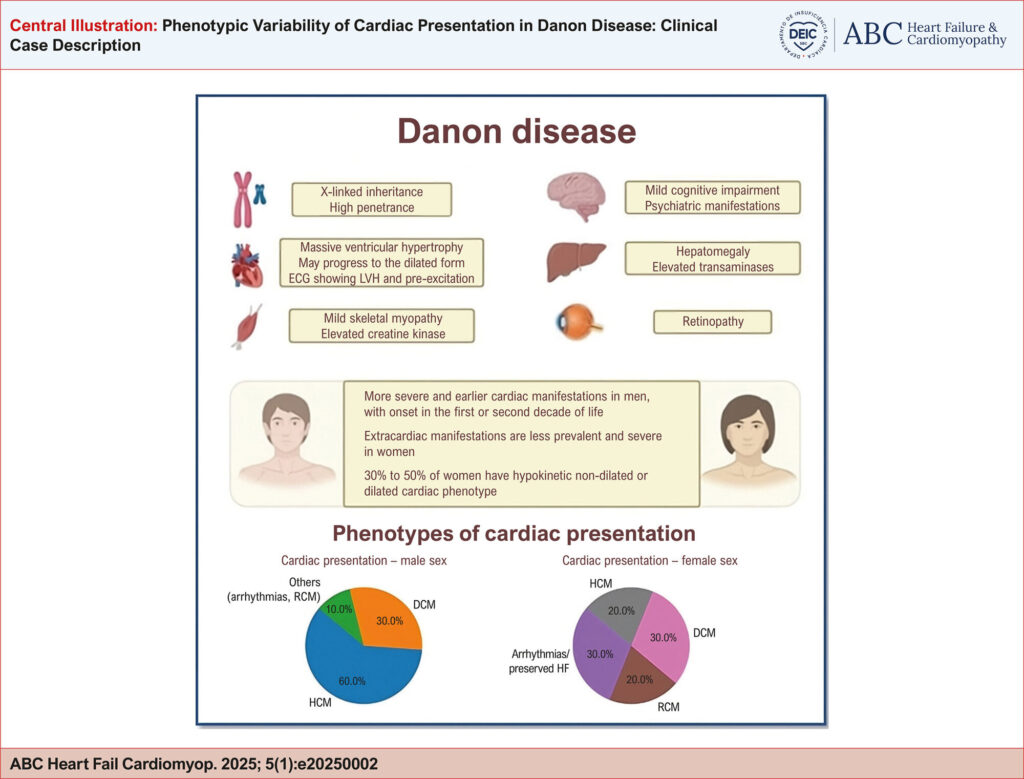ABC Heart Fail Cardiomyop 2025; 5(1): e20250002
Phenotypic Variability of Cardiac Presentation in Danon Disease: Clinical Case Description
Abstract
Danon disease is a rare genetic disorder associated with mutations in the LAMP2 gene, located on the X chromosome, which encodes the LAMP2 protein that is essential for autophagy. The disease is characterized by a triad of cardiomyopathy, skeletal myopathy, and intellectual disability, with clinical manifestations that vary between the sexes. Men generally present with more severe and earlier forms, with hypertrophic cardiomyopathy and arrhythmias, whereas women present with later progression and less homogeneous symptoms. To illustrate the wide variety of manifestations, we report the clinical case of a young female patient diagnosed with heart failure, progressing to heart transplantation, where a mutation in the LAMP2 gene was identified through the anatomopathological findings of the explanted heart. The prevalence of Danon disease is uncertain, but it is believed to affect diverse ethnicities, with a higher prevalence in groups with ventricular thickening. The pathophysiology involves defective autophagy, impaired mitophagy, and oxidative stress, leading to cardiomyocyte hypertrophy and fibrosis. Diagnosis is confirmed by means of biopsy, immunohistochemistry, and genetic testing, and it is essential to assess family risk. Treatment focuses on the management already defined for heart failure and arrhythmias, with heart transplantation and ventricular assist devices as therapeutic options.
285


